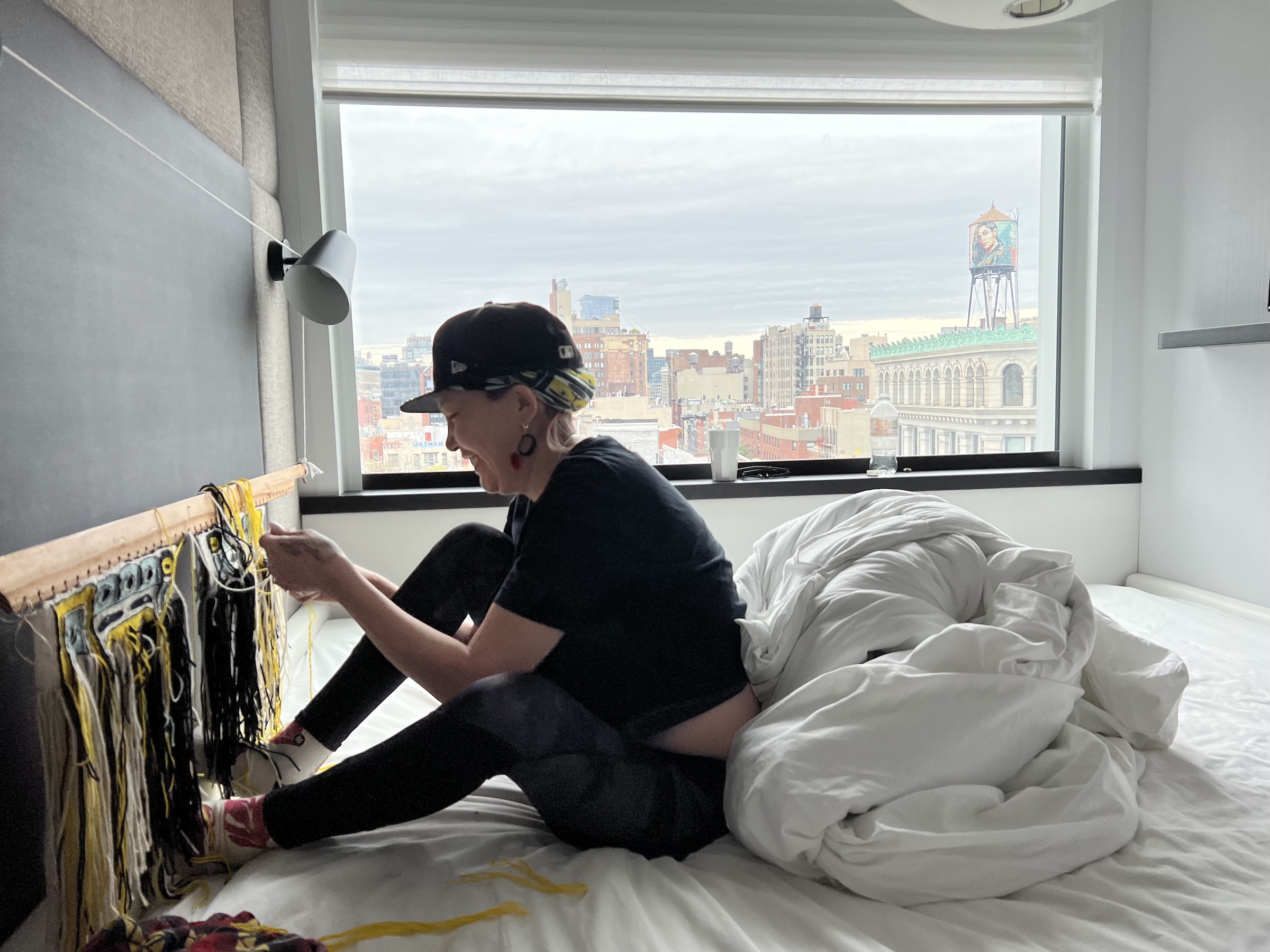Master Chilkat weaver Kerri Dick (Kwakwaka’wakw, Haida, Tlingit, Kootenay), whose artistry fused traditional carving, weaving, and beading practices that she learned from family members and shared with her local Haida Gwaii community, died at age 41, as confirmed by her family in an announcement posted yesterday to Facebook. The cause of death has not been made public.
Born in 1983 in Burnaby, British Columbia, Dick was raised by a family of artists which included her mother, Haida artist Sherri Dick, and her father, the late Kwakwaka’wakw mask maker Chief Beau Dick, who greatly influenced her community-based practice. At eight years old, she took up Chilkat weaving — an intricate finger-twining art form that originated from First Nations communities in the Pacific Northwest and usually features patterns with curved lines and shapes.
She spent her childhood moving up and down the coastline, learning from a variety of First Nations teachers, including Primrose Adams (Haida), William White (Tsimshian), Donna Cranmer (’Namgis Kwakwa̱ka̱’wakw), and April Churchill (Xiihliikingang, Gawa Git’ans Gitanee); and studying works by her ancestors Emily White and Isabella Edenshaw held in museum collections, according to her Just Art gallery biography. She was recognized for her yellow and red cedar bark and spruce root weaving, and also drew from Ravenstail practices (a geometric-patterned weaving art form), incorporating wool Ravenstail pieces into her work.

Her work is held in the permanent collections of the U’mista Cultural Centre, the University of British Columbia’s Museum of Anthropology, and the Museum of Northern British Columbia.
“The art world was not her focus; weaving in community, working in community, and her family — that was her focus,” Sarah Macaulay, founding director of Vancouver’s First Nations-focused art gallery Ceremonial/Art, told Hyperallergic, adding that Dick spent much of her time traveling and teaching younger people how to do Chilkat weaving.

In 2022, Macaulay worked with Dick on a solo exhibition of her work at the New York gallery Diana. She recalled that less than a month before the show, Dick insisted that she present her artwork alongside that of her mother and her brother Jay Bellis — a focus on community that she inherited from her family.
“In my experience working with her father, he was very much the same way: always bringing other artists from his community with him to kind of lift them up and give them visibility and opportunities,” Macaulay said.

“It was her first time doing a solo exhibition and it was very meaningful to her to share it with people,” Macaulay continued, noting that Dick was known for her “sharing her knowledge about her culture and where the work comes from and what it means.”
Dick’s cousin, Haida carver Corey Bulpitt, described her as a “very genuine” person who lived “without fear” in a phone conversation with Hyperallergic.
“She’d come into the middle of the potlatch (a ceremonial community feast) late, in big heels with like blue hair and a silver jacket on; she had her own style,” Bulpitt said, adding that he created designs for multiple of her weavings.
“It was always an honor for me for her to ask me to do that,” he said.
In addition to her mother and brother, Dick is survived by her parent Mick Morrison; her children Gavin Konschuh, Beau Dick-Biron, and Lavina “Livy” Dick; her grandmother Gerri Dick; and siblings Koyas Morrison, Geraldine Rita Doreen Dick, Cora Yeltatzie, and Guts’ing Jaada Kuyaas.


